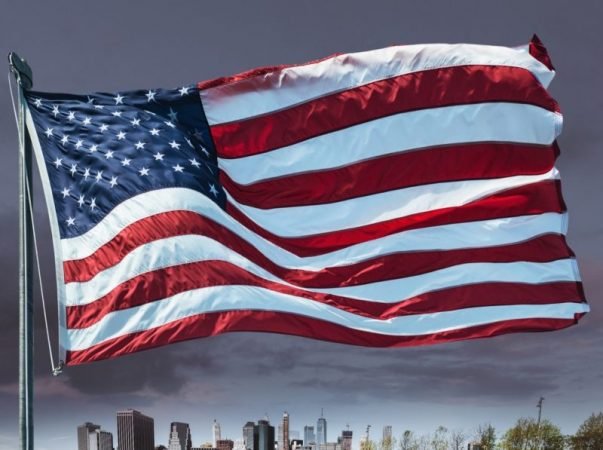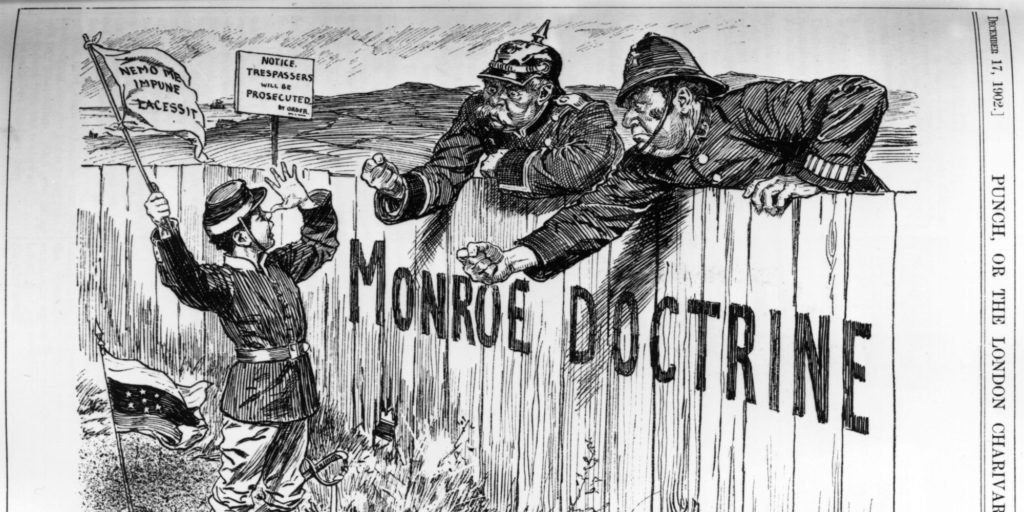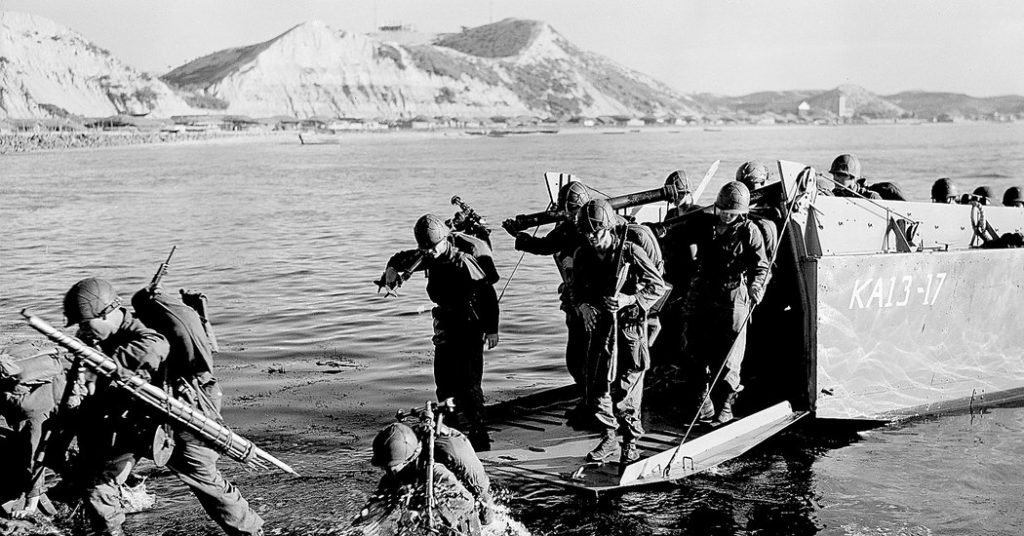Making of the American Foreign Policy

‘America has no permanent friends or enemies, only interests‘ this quote by Henry Kissinger indicates a lot about the course of American foreign policy.
The American foreign policy has evolved throughout its history that has produced two contradictory attitudes- the first of America as a beacon and of America as a crusader. This article sheds light upon American foreign policy by providing an account of the structures and traditions which shape it. The US foreign policy is the product of ambivalent tradition and forces. The tension between expansive internationalism on the one hand and the wish to disengage from world problems, on the other hand, formulated the course of American foreign policy since its independence.
Earlier, Benjamin Franklin had summed up the idea of American foreign policy when he quoted: ‘A virgin state should preserve its virgin character and not go suitoring for alliances, but wait with decent dignity for the application of others.” After the American Revolution and during the initial phase of independence, American foreign policy was to observe political isolation from European nations during peacetime and maintain neutrality during periods of war. President George Washington, in his 1796 Farewell Address, advised the congress and the citizens of America to keep as little political connection as possible with the European nations. Even though the political views of Thomas Jefferson varied from those of Washington, later Jefferson agreed that isolation and neutrality were the best suitable foreign policies for the United States.
In the early 1800s, the United States gained prestige, and its influence grew in the North American continent while diplomats were trying hard to keep the European nations out of the Western Hemisphere. In the year 1803, the Louisiana Purchase bought a vast chunk of the North American continent under United States control. After James Monroe took over the office, his administration arranged the Rush-Bagot Agreement of 1817, the Convention of 1818 which settled the disputes with Great Britain and the border issues with Canada, and the Adam-Onis Treaty with Spain in 1819 added Florida to the national domain that settled the boundary with Mexico on advantageous terms. The Secretary of State John Quincy Adams briefly summed American thought in the Monroe Doctrine of 1823.

The Monroe doctrine mentioned that the Western Hemisphere is closed to further colonization and announced that the United States would refrain from interference in European affairs, and warned the Europeans to stay out of the domestic affairs of the new American republics. Even though the United States was too young and weak during the enforcement of Monroe doctrine, it gave a clear indication that the United States saw itself as the dominant and the leader of the free nations of the Western Hemisphere. Even after a few treaties, foreign affairs declined importance during the 19th century while the United States focused on domestic expansion and internal trade. The Europeans were experiencing a stable and complex balance of power after the defeat of Napoleon. If any European nation attempted to interfere in the affairs of the Western World the Nation would have found itself in considerable difficulty from its neighbours at home. It resulted in the United States enjoying an extended period of tranquillity and gave the United States the luxury to concentrate on domestic expansion during the middle of the 19th century. The country faced no serious external threats until the Civil War in 1861, the triumph of union forces in 1865 Civil War finally ended the dispute over the relative merits of national authority and state’s rights that helped the United States to emerge as a powerful and secure nation than at any time in its history.
After the Civil War, the situation in the United States was much better that helped the US to expand its power in the western hemisphere and in building a strong and powerful economy. Even though there were few changes in foreign policy, the basic principles of isolation and neutrality remained firmly ingrained. However, this neutrality and isolation were gone after a short but shattering war in 1898, where the US-supported Cuba for independence from Spain. The decision to support Cuba was a major departure from the traditional American foreign policy approach that had far-reaching consequences. This Spanish-American War of 1898 changed the equation of international balance of power all around the world, and the United States entered the 20th century as an emerging superpower and adopted new foreign policies. In the early 20th century, America was one of the largest exporters of goods and raw materials, it had a well-respected navy, and the Panamanian Revolution of 1903 gave America an edge over other nations.

In 1912, Woodrow Wilson got appointed as the President of the United States. The first World War broke out in 1914 between the Allied Powers and the Central Powers in Europe. President Woodrow Wilson announced a policy of strict neutrality keeping the United States in isolation from WWI till 1917. The United States was dragged into WWI because of the submarine warfare in April 1917 as an “associate” but not an ally of the allies. By 1917, the war had become a quasi-global conflict that the world had never seen before. President Wilson thought that only the United States could form an effective peace settlement plan because all the combatants of WWI had almost been left politically and morally bankrupt. It reflected President Wilson’s vision of dominating the post-war peace conference. Now the US was no longer an isolationist, it became interventionist as Woodrow Wilson came up with a “Fourteen Points” peace plan in January 1918. The main goals of the peace plan were to maintain peace without blame, no secret alliance, no barriers to trade, and a belief that capitalism-democracy could create a world free of war and revolution and enduring international balance through a new collective security organization, the League of Nations, based on the consensus of the great powers. During the 1920s, the United States focused on preventing the outbreak of war and strongly resisted any international commitment. The clear dangers emerged during the Great Depression of the 1930s where the United States suffered from massive economic shocks and reinforced the country’s isolationist predispositions during the rise of totalitarianism.
Despite the stance of neutrality, President Franklin D. Roosevelt provided wholesale economic assistance to the United Kingdom and the Soviet Union through the Lend-Lease Act of 1941. Around this time, the United States faced a major crisis in the refugee policy due to the Nazi’s stance against Jews in Germany and occupied Europe. The isolationist approach changed rapidly after the start of the Second World War, Nazi Germany and its allies forced the United States to pursue an interventionist policy. The United States entered the war when the Japanese attacked Pearl Harbor in December 1941, this marked the end of America’s isolationist policy. There were joint allies and victories by the end of WWII, the creation of a global system was necessary to maintain international peace which resulted in the creation of the United Nations post-WWII as an international peacekeeping body for the collective security of the member nations. The United States became the permanent member of the security council along with France, Great Britain, Russia, and China. The United States being the founding member and permanent member of the security council gained veto power with the other 4 nations.
In April 1945, Harry S Truman became the President of the United States, during this time most of Europe and Asia laid in ruins. Even if the Axis powers had been defeated, an ominous new threat appeared on the horizon. The United States and the Soviet Union emerged as the two new global powers from the war, although they were allies during the Second World War, the conflict between them started rising after the war. The efforts to maintain peace and cooperation between Washington and Moscow had broken down completely by the end of 1947, hence President Truman took decisive steps to contain the spread of Soviet expansion in regions where the United States had vital interests. The two rising superpowers had two different ideologies- Communist and Capitalist, both seeking worldwide support for their ideas. The United States came into the role of being interventionist and took the lead against Communism, the United States applied mainly three Cold War policies to reduce the expansion of the Soviet Union.
In March 1947, President Truman came up with the “Truman Doctrine” which supported emergency economic assistance to Greece and Turkey. Here, the key to preventing the revolution of free nations was to attack the conditions of “misery and want” that fostered totalitarianism. Soon this principle was applied to Western Europe by Secretary of State George C. Marshall and massive economic assistance was provided to the devastated nations in Europe, saying that “the policy of the United States was not directed towards any country or doctrine but against hunger, poverty, desperation, and chaos. The purpose of the assistance should be to revive the economies in the world and to permit the existence of political and social conditions in which free institutions can exist.” The American Congress responded to Marshall’s proposal by accepting the European Recovery Program, that is well known as the Marshall Plan. An investment of about $13 billion was made in Europe in the next few years that resulted in the speedy and durable reconstruction of a democratic Western Europe. This investment and intervention helped the United States in defending the spread of communism in Western Europe. President Truman had already applied the policy of containment to Latin America, the Rio Pact signed in 1947, and the creation of the NATO Alliance formally marked the end of George Washington’s policy of no entangling alliances.

NATO became a working alliance, the United States was providing economic assistance to Europe, the Soviet Union detonated an atomic bomb, and Mao Zedong’s communist party took control of mainland China, all these events made foreign policy every nation’s top priority. North Korea invaded South Korea in June 1950, where the United States sponsored a police action under the auspices of the United Nations. The Korean War was difficult to fight, in late 1951, the two sides bogged down on the 38th parallel, and the conflict seemed evocative of trench warfare in World War I. Americans were tired of war without victory, the opposition eroded Truman’s public support and helped to elect Republican presidential candidate, Dwight D. Eisenhower as the United States’ next president. During his office, Eisenhower consolidated the policy of containment and the United States sanctioned a series of bilateral and multilateral treaties which included the Central Treaty Organization (CENTO) and the Southeast Asia Treaty Organization (SEATO) and bilateral treaties with Japan, South Korea, the Republic of China, and the Philippines.
President John F. Kennedy and his diplomats entered office in January 1961, with a reputation of being young and dynamic. During his tenure, he also focused on the “Third World” countries by establishing a separate Agency for International Development(AID) in 1961. His policies were an overall bag of success and failure, especially the policies towards the Soviet Union brought the world to the brink of nuclear war. Around October 1962, the Kennedy Administration faced its most serious foreign policy crisis. Soviet Premier Nikita Khrushchev was trying to strengthen the ties with Cuban President Fidel Castro and made a promise to defend Cuba from the United States. Finally, on October 22, 1962, after extensive consultation with his foreign policy and military advisors, Kennedy blockaded Cuba on October 22, 1962. The two sides were on the edge of a nuclear war, but Khrushchev surrendered six days later and dismantled the missiles. In return, the United States parted its missile sites in Turkey. Thus, the most confrontational period in US-Soviet relations since WWII came to an end. After President Kennedy’s assassination in November 1963, Lyndon B. Johnson became the President.
In 1972, President Nixon pursued two important foreign policies by travelling to the People’s Republic of China and the Soviet Union in February and May 1972 respectively. These moves marked the beginning of a period of “détente” by developing a working relationship with communist states to ease the cold war tensions. Despite all these policies, there was not any improvement in the international climate, the international economy was experiencing a major crisis and instability which made it necessary to formulate a stable international financial system in place. In 1979, Iranian students seized the US embassy and held the American diplomat’s hostage for 444 days. This reflected the weakness of President Carter’s conduct of foreign policy and he lost the elections of 1980 to Republican presidential candidate Ronald Reagan. Finally, on January 20, 1981, the hostages were freed after Ronald Reagan was sworn in as president.

New Soviet leader, Mikhail Gorbachev emerged in 1985 which intensified the policy struggle in Washington. Soviet leader Gorbachev came with a vision of restructuring the Soviet economy and reforming domestic society, his fundamental goal was to change the relationship between superpowers and his method was arms control agreements. This resulted in both the leaders signing the Intermediate-Range Nuclear Forces (INF) Treaty, which eliminated an entire class of missiles in Europe. On the night of November 9, 1989, the German crowd came to the streets and began dismantling the Berlin Wall which symbolized the Cold War division of Europe. Thirteen months later, on December 25, 1991, Gorbachev resigned and the Union of the Soviet Socialist Republic dissolved and this was the official end of the Cold War. The US president Bush gave economic assistance of $4.5 billion to support economic reforms in Russia and additional credit and technical assistance to revive the system. The Strategic Arms Reduction Treaty negotiations (START) was signed by both the Cold War adversaries in January 1993, which set a goal of reducing their strategic nuclear arsenals.
Rapid changes in Europe, China, South Asia, and the Korean peninsula changed international relations once again. The pro-democracy protests in the People’s Republic of China created an upheaval in the world media. Just after Chinese protests in 1989, Saddam Hussein invaded his small, oil-rich neighbour Kuwait in the summer of 1990, this was the very first international crisis post-Cold War. The United States forged an international coalition consisting of NATO allies and the Middle Eastern countries to oppose Iraqi aggression. Russia did not commit troops but it joined the United States and other allies. In January 1991, Iraqi forces were expelled from Kuwait followed by “Operation Desert Strom”.
As the 1990s began, the Cold War was finally over and the United States was the sole superpower. As the world focused on economic development and strengthening of domestic economies, the trade reforms of the 1990s changed the whole dynamic of international relations. The policies of Globalization, Privatisation, and Liberalization were pro-United States and it helped the world in all aspects of life by bringing in advances in technology, and cultural dynamics. The United States was the only superpower but it also emerged as a soft power and gained cultural superiority in many parts of the world. People around the world started following the American way of life, the American pop culture was gaining popularity in various parts of Asia and Africa.

In the 21st century, the US influence remains strong but in relative terms due to rising nations such as China, India, Russia, and the European Union. The world is on its way to becoming multi-polar in the latter half of the 21st century. The idea of a more peaceful and safer world would be dashed by the rising regional conflicts and global problems like economic superiority, terrorism, climate change, cyber threats, and nuclear proliferation are still a challenge to the world. Entangled between a pristine past and yearning for a perfect future can lead to a new course of foreign policy for the United States.


















